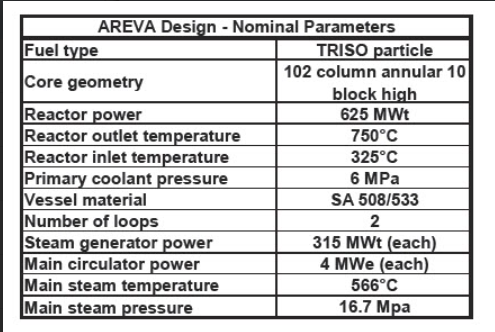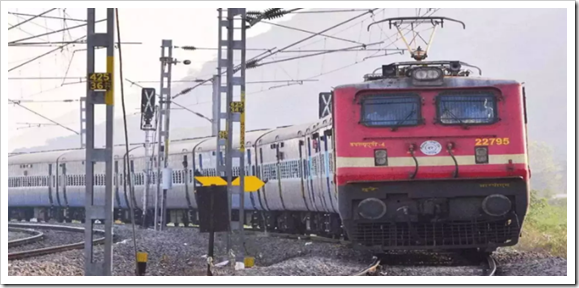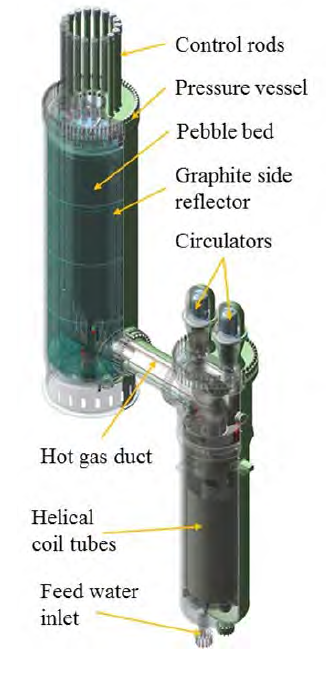- Dow & X-Energy Submit Construction License to NRC for Texas Site
- Fermi Energia Teams with Samsung for Twin BWX-300 SMRs
- Poland’s President OKs $15.5 Billion for First Nuclear Power Station
- Poland Reaches 1st Agreement With Bechtel, Westinghouse on EPC Terms
- HOLTEC Cleared to Build SMRs in India
- India in Talks with Westinghouse for Six AP1000s
- Indian Railways Eye SMRs To Meet Power Needs
- State Loans Proposed For New Swedish Reactors
Dow & X-Energy Submit Construction License to NRC for Texas Site
Dow (NYSE: DOW) and X-Energy Reactor Company, LLC announced the submission of a construction permit application to the Nuclear Regulatory Commission (NRC) for a proposed advanced nuclear project in Seadrift, TX.
Dow’s proposed advanced small modular reactor (SMR) project is being developed by its wholly-owned subsidiary, Long Mott Energy LLC. The project is focused on providing Dow’s UCC Seadrift Operations manufacturing site (70 miles northeast of Corpus Christi, TX) with power and industrial steam replacing existing energy and steam assets that are near end-of-life.
The project is supported by the Department of Energy’s (DOE) Advanced Reactor Demonstration Program (ARDP) which is designed to accelerate the deployment of advanced reactors through cost-shared partnerships with U.S. industry.
Since 2018, X-energy, and subsequently Dow, have worked with the NRC through extensive pre-application engagements with the NRC. This has culminated in a comprehensive application submittal that that complies with NRC regulations for the protection of public health and safety, as well as the environment, with substantial safety features.
Approval of the construction permit is an important step forward that could take up to 30 months. Once the permit is received and upon Dow confirming the ability to deliver the project while achieving its financial return targets, construction could begin. Dow expects the cost of energy net of all subsidies to be competitive with other alternatives for firm, clean energy.
“This is an important next step in expanding access to safe, clean, reliable, cost-competitive nuclear energy in the U.S.,” said Edward Stones, business vice president, Energy & Climate, Dow.
“We look forward to engaging with the NRC, DOE, our business partners and the community throughout the application process.”
“The construction permit application is a critical step to deliver on the vision of Congress and DOE to position the U.S. at the forefront of commercializing advanced reactor technology,” said J. Clay Sell, chief executive officer of X-energy.
The proposed project could begin construction later this decade and start up early next decade. The nuclear power and steam assets would eliminate most Scope 1 and 2 emissions at the site and ensure the site remains competitively advantaged for the life of the facility.
X-energy was selected by the DOE in 2020 to develop, license, and build an operational Xe-100 advanced SMR and TRISO-X fuel fabrication facility. Since that award, X-energy has completed the engineering and preliminary design of the nuclear reactor, has begun development and licensing of a fuel fabrication facility in Oak Ridge, TN, and has secured approximately $1.1 billion in private capital to commercialize its technology. Once complete, Long Mott Generating Station is expected to be the first grid-scale advanced nuclear reactor deployed to serve an industrial site in North America.
Dow’s Seadrift site covers 4,700 acres and manufactures more than 4 billion pounds of materials per year used across a wide variety of applications including food packaging and preservation, footwear, wire and cable insulation, solar cell membranes, and packaging for medical and pharmaceutical products.
NGNP Lives Again
This is Dow’s second run at having an HTGR provide heat and power for its chemical processing plants. Between 2005 and 2013 Dow was a member of an industry consortium called the “Next Generation Nuclear Plant.” It envisioned a 320 MWe HTGR powered by TRISO fuel.
DOE and INL established the NGNP Project as required by Congress in Subtitle C of Title VI of the Energy Policy Act of 2005. The mission of the NGNP Project is to develop, license, build, and operate a prototype modular high temperature gas-cooled reactor (HTGR) plant that would generate high-temperature process heat for use in hydrogen production and other energy-intensive industries while generating electric power at the same time.

Members of the alliance included; AREVA, Babcock & Wilcox, ConocoPhillips, Dow Chemical, Eastman Chemical, Entergy, Westinghouse, PotashCorp. Supporting Organizations: Electric Power Research Institute, BEA/ Idaho National Laboratory.
The technical specifications for the NGNP design bear a remarkable similarity to the configuration planned by X-Energy for the Dow chemical plant. X-Energy plans to build four 80 MWe HTGRs for a total power rating of 320MWe.
X-Energy’s technical legacy owes a credit line to South Africa’s PBMR project. Some of the principal engineers for the PBMR were early key members of the X-Energy Team.
NGNP pre-licensing interactions began in 2006 and were suspended in 2013 after DOE decided in 2011 not to proceed into the detailed design and license application phases of the NGNP Project. DOE’s decision cited impasses between DOE and the NGNP Industry Alliance in cost sharing arrangements for the public-private partnership required by Congress.
& & &
Fermi Energia Teams with Samsung for Twin BWX-300 SMRs
- FERMI Energia and Samsung C&T Engineering and Construction Group Signed a Teaming Agreement for SMRs in Estonia.
- The plan is to build two 300 MWe BWRX-300 SMRs.
Under the Teaming Agreement, Fermi Energia and Samsung C&T will collaborate on the necessary framework for the deployment of up to 600 MWe of clean, reliable power. The cooperation will focus on key aspects of the project, including the formation of an Engineering, Procurement, and Construction (EPC) partnership, site constructability review, cost estimation, and financing strategies. The agreement also positions Samsung C&T as a potential EPC Prime Contractor and key commercial partner in the Estonian SMR project.

As part of the agreement, Fermi Energia and Samsung C&T will work together during the pre-Front-End Engineering Design (Pre-FEED) phase to establish project terms and budget estimates. The Teaming Agreement also outlines plans for a full FEED phase, setting the stage for the regulatory approval and construction process.
Key Questions for Project Success
There are so many of these nonbinding MOUs being issued by various parties with plans for SMRs that it becomes necessary to ask key questions about them. Here are a few examples of the many topics that developers of SMRs, and micro reactors, face when starting down the road to a commercial solution.
The Fermi Energia press statement does not address the financial factors for the project including where the money is coming from for the two SMR, e.g, what is the mix of government and institutional investors, are there are commitments from the government for rate guarantees, loan guarantees or direct fundings?
At a hypothetical cost of $5,000/kw, the two reactors will cost $3 billion in today’s dollars. Given that construction is unlikely to break ground for at least five years, costs will be higher.
The press statement is also silent on the role of GE-Hitachi which would be the supplier of the BWRX-300s. At what point, in terms of a timeline would Fermi Energia place an order for the two reactors? Usually, press statements of this kind include information from the reactor vendor including quotes from the vendor’s management team.
What about regulatory approval in Estonia for the BWRX-300? When would that process get underway? More importantly, is Estonia’s nuclear safety agency ready to license and conduct oversight of the construction of these units?
Note that while GE-HItachi is in pre-licensing engagement in the U.S. with the NRC, and license decision for a construction go ahead under Part 50, presumably at TVA’s Clinch River site, isn’t likely for at least a few years and an operating license is plausible thereafter, e.g., by the end of this decade.
How does that timeline affect Fermi Energia’s plans? Where will the workforce come from? What about training for plant operators?
Another key issue is the selection of a site in Estonia. This question assumes the two SMRs would be co-located at the same site to consolidate costs for land acquisition, switchyards, transportation access, etc. Coastal sites make sense to support delivery by ocean going barges of the RPVs, generators , switchyard transformers, etc. Also, sea water can be used for the third loop, e.g., condenser cooling of the steam coming off the turbines.
Why Are These Questions Important?
It is one thing to bravely go forth and claim that an entity is planning to build SMRs and has a paper agreement outlining plans to proceed. It is entirely another the answer these kinds of questions with verifiable information.
These questions apply to every SMR and micro reactor startup, especially those led by management teams with no prior experience in the nuclear energy industry.
There seems to be a global cottage industry of startups in this category headed by people from other technology sectors, e.g., computers, space technologies, etc. The recent bankruptcy of Ultra Safe Nuclear Corp should be an object lesson that even deeply funded startups with substantial nuclear engineering talent can and do wind up with their parts offered for sale on the auction block.
Estonia has a huge challenge ahead in terms of decarbonization of its energy sector. According to the International Energy Agency, in 2023 58% of power generation came from coal, 29% from various biofuels, and 7% from natural gas.
Getting into the business of building SMRs is the right policy approach. It will be important for the firm to prove that, and the end of day, it can go the distance to having the two SMRs in revenue service.
No Government Funding, at Least for Now
In response to an email inquiry from Neutron Bytes, a spokesperson for Fermi Energia wrote, “Fermi Energia, being a private company founded by Estonian nuclear experts and entrepreneurs, has secured funding from private and strategic investors (including Vattenfall in 2021).”
Other than Vattenfall, the statement did not identify any other investors. Further, the company says its business plan “does not assume state production subsidies in an undistorted energy market.”
However, the firm also says, “the addition of any new generation capacity to the market would likely require contracts for difference that have to be equally available to renewable and nuclear energy investment as per European Council December 2024 electricity market reform decision.
The bottom line for the firm, at least for now, is that it “does not seek for any government funding to continue the preparatory works.”
About Fermi Energi
In its report about Fermi Energiaa’s MOU with Samsung, World Nuclear News reported on 4/2/25 Fermi Energia was founded by Estonian energy and nuclear energy professionals to develop deployment of SMRs in Estonia. In July 2019, the company launched a feasibility study on the suitability of SMRs for Estonia’s electricity supply and climate goals beyond 2030, following a financing round from investors and shareholders.
In February 2023, the company selected GE Hitachi Nuclear Energy’s BWRX-300 SMR for potential deployment by the early 2030s. GEH’s BWRX-300 design is a 300 MWe water-cooled, natural circulation SMR with passive safety systems that leverages the design and licensing basis of GEH’s ESBWR boiling water reactor.
In January this year, Fermi Energia submitted an application to Estonia’s Ministry of Economic Affairs and Communications to begin the state spatial planning process for a 600 MW nuclear power plant. The municipal councils of Viru-Nigula and Lüganuse have formally agreed to participate in the spatial planning process, with decisions made in September 2023 and March 2024, respectively.
Fermi Energia expects to submit a construction permit application for the proposed plant in 2029, with construction targeted to begin in 2031. The first of two SMRs is set to be operational by the second half of 2035.
& & &
Poland’s President OKs $15.5 Billion for First Nuclear Power Station
(NucNet) Poland’s president Andrzej Duda has signed into law a bill providing $15.5 billion in financing for Poland’s first commercial nuclear power plant in the northern province of Pomerania. In February, the bill was passed by parliament with almost unanimous support for the plans.
It is intended to cover 30% of state-owned project company Polskie Elektrownie Jadrowe’s (PEJ) capitalization, with the remaining 70% portion to be sourced from foreign borrowing. Poland has run into difficulties in the past attracting outside investors for its nuclear energy projects. One of the stumbling blocks has been resistance from the European Union on how the project is organized to bring on vendors and the role of state subsidies.
The obstacle to funding is that Warsaw is still awaiting European Union approval. In December 2024, the European Commission announced an investigation into whether Poland’s plan to support its nuclear power project, expected to cost in total between $36.4 to $46.8 billion is in line with European Union’s competition rules. PEJ said recently that once the commission gives the green light for state support, the company will be able to attract funds to finance the next stages of the project.
According to PEJ, it is also advancing negotiations with the Westinghouse-Bechtel consortium, which was selected in late 2023 to lead the project, finalizing an engineering development agreement Discussions continue regarding the engineering, procurement and construction (EPC) contract. Westinghouse will be providing three AP1000 pressurized water reactors for the facility. PEJ said it expects to begin preparatory work this year for the first nuclear unit. (See next story below.)
& & &
Poland Reaches 1st Agreement With Bechtel, Westinghouse on EPC Terms
(NucNet) Poland’s state nuclear project company Polskie Elektrownie Jadrowe (PEJ) and a Westinghouse-Bechtel consortium have agreed on the terms of an engineering development agreement (EDA), paving the way for the next stage in the development of Poland’s first nuclear power station. Piotr Piela, acting president of PEJ, told a conference that an EDA would secure the next stage of the project until a general engineering, procurement, and construction (EPC) contract is signed.
Poland expects to pour first concrete for the first AP1000 reactor unit in Pomerania in 2028, with commercial operation scheduled for 2036.
PEJ said the agreement will cover continued design and preparatory work at the planned site near the villages of Lubiatowo and Kopalino in the northern province of Pomerania. The scope will include geological surveys and efforts to obtain regulatory approvals and permits needed for construction to begin.
Wojciech Wrochna, government minister for strategic energy infrastructure in Poland’s industry ministry, said that Poland had taken another step forward on the project. Wrochna said the signing of what he called the “bridge agreement” marks the beginning of the next phase of cooperation, enabling the execution of the design process followed by construction.
In 2022, Warsaw chose US-based Westinghouse to supply its AP1000 pressurized water reactor technology for the construction of three units at the Lubiatowo and Kopalino site, on the Baltic Sea coast, northwest of Gdansk.
In September 2023, PEJ signed the first engineering services contract with the Westinghouse-Bechtel consortium that would cover the preparation of the initial plant design and engineering documentation for the project.
& & &
HOLTEC Cleared to Build SMRs in India
- The U.S. government has authorized Holtec International under 10CFR810 to Provide SMR-300s Nuclear Plants to India with the Concurrence of that nation’s Government
The U.S. Department of Energy has granted a specific authorization under 10CFR810.9 to Holtec International, with the Indian Government’s (GOI) concurrence, to sell the Company’s small modular reactor SMR-300 for deployment in India. The authorization names three Indian companies – Larsen & Tubro (Mumbai), Tata Consulting Engineers (Mumbai) and the Company’s own subsidiary, Holtec Asia (Pune) – as eligible entities with whom Holtec can share necessary technical information to execute its SMR-300 program. The SMR-300 is a PWR type light water design.

While Holtec initially sought authorization for six Indian end-users—including state-run entities Nuclear Power Corporation of India Ltd (NPCIL), NTPC Ltd, and the Atomic Energy Regulatory Board (AERB)—the Indian government has not yet completed the non-proliferation assurances for these entities required by India’s 123 Agreement with the U.S.
Work on these agreements is expected to be completed this year. US DOE is seeking assurances that there will not be transfers of US nuclear technologies for non-civilian, e.g., military uses.
Under the new approval, Holtec must comply with several conditions, including ensuring that transferred technology is not shared with unauthorized entities or foreign countries without U.S, government consent, submitting quarterly reports to the DOE on technology transfers, and prohibiting access to sensitive nuclear enrichment technology.
Holtec said in its press statement the specific authorization granted to Holtec to build SMR-300 reactors in India, with the participation of eligible Indian companies, shows the U.S. has a shared interest in boosting India’s nuclear energy output.
However, to realize a rapid build-out of nuclear plants, India still needs to remove the legal barriers that stand in the way because of previously enacted laws that prohibit ownership of nuclear plants by private industry, and which expose the private sector reactor suppliers to unlimited liability. The Indian government claims is it is working on legislation to permit private sector investment in the nuclear sector and to align the suppliers’ financial / liability exposure with global norms and treaties.
A timeline for resolution of these concerns is not immediately clear. India has aggressively and successfully used its supplier liability law to lock out western nation reactor vendors and to preserve the dominance of it state owned, commercially operated coal power mines and power operations.
Also, India has committed to building 10 and as many as 17 700 MWe PHWR reactors at various sites and as many as 40-50 220 MWe PHWRs throughout the country. Both fleet scale projects will relay on 100% domestic supply chains for nuclear and non-nuclear systems and components. NPCIL has indicated that on a cost competitive basis it can build these PHWRs far more cheaply, and in greater number, given financing available from the government than building six EDF 1,650 EPRs at Jaitapur.
Holtec plans to adapt the SMR-300 for 50 Hz electricity (as opposed to 60 HZ used in the US) if successful in the Great British Nuclear (GBN) program, which will pave the way for use in India and other 50 Hz markets. Any further adaptations of the technology necessary to comply with Indian regulations or design standards would be done in partnership with Holtec Asia and other Indian partners (subject to the applicable 810 export control restrictions).
& & &
India in Talks with Westinghouse for Six AP1000s
The Indian government said discussions were in progress with the Westinghouse Electric Company for a viable project proposal to build six 1000-MW nuclear reactors at Kovvada in Andhra Pradesh.
Minister of State in the Prime Minister’s Office (PMO) Jitendra Singh, said the land for the main plant area for Kovvada Nuclear Power Plant of 2,080 acres has been acquired by the Nuclear Power Corporation of India Limited (NPCIL).
The minister said pre-project activities such as preliminary geotechnical investigations, and geological and seismo-tectonic studies have been completed.
“Discussions with Westinghouse Electric Company (WEC), USA, are in progress to arrive at a viable project proposal for implementation of 6 units of AP 1000 reactors, at 1,150 MWe each, at Kovvada. WEC is yet to submit a Techno-Commercial Offer (TCO) for the same,” Singh said.
He added that the government is assembling a financing package for the project. The project cost is estimate, in US dollars, at about $30 billion. Singh said that pre-construction financing has already been approve by the government. It isn’t clear whether India will accept foreign direct investment in the Westinghouse project.
By comparison, Russia is self-financing the construction of all six 1,000 MWe VVER at Kudankulam in Tamil Nadu. The first two units are in revenue service. Units 3 & 4 are expected to be completed in 2025 and 2026 respectively. Units 5 & 6 are under construction. A long-term credit plan with Rosatom covers about 50% of the cost of each unit.
& & &
Indian Railways Eye SMRs To Meet Power Needs
The Indian Railways has initiated discussions with the Department of Atomic Energy (DAE) and power ministry to set up small nuclear power plants for its energy requirements, a move that will also help the national transporter to achieve its net zero goal by 2030.

The Indian Railways will offer land and offtake assurance while DAE and the power ministry will facilitate establishment of plants with a fuel supply agreement, said officials aware of the development.
‘Discussions have begun…This would help railways achieve net zero swiftly,’ a senior official told ET. These plants will help fulfil the transporter’s 10 GW traction requirement by the end of the decade.
The railways plans to buy 3 GW of renewable energy including hydropower and another 3 GW of thermal and nuclear power in 2030. The remaining 4 GW needed for traction (energy used to run trains) will be sourced through tieups with power distribution companies.
Land is not an issue for railways and work has begun on identifying sites, said the official.
‘Public sector financing arms under Indian Railways will provide the funding support for these projects,’ another senior official told ET. The Indian Railways Finance Corporation (IRFC) is said to be among those who will be tasked with raising funds for these projects.
In 2016, the railways had held exploratory discussions for setting up a joint venture to set up nuclear power plants. But those plans did not take off due to the costs involved.
Railways minister Ashwini Vaishnaw said in a press statement that the Nuclear Power Corporation of India Limited (NPCIL) and the power ministry had been approached for the allocation of nuclear power to the national transporter. He also said the power requirement of Indian Railways is increasing consistently.
‘Railways have been exploring the option of sourcing power from existing as well as upcoming nuclear power plants to meet part of its traction power requirement.”
& & &
State Loans Proposed For New Swedish Reactors
(WNN) The Swedish government has proposed a new law regarding state support for nuclear power investments. In the bill – submitted to parliament on 03/27/25 – it proposes providing state loans to finance four new reactors as well as a contract-for-difference power price mechanism.
“In the bill, the government proposes a new law on state support for investments in new nuclear power,” the government said. “The law regulates the basic conditions and forms of state support for companies for investments in new nuclear power reactors in Sweden.”
It added: “Government loans may be provided for the construction and test operation of new nuclear power reactors, as well as for design and other preparatory measures for construction.”
The loans – aimed at lowering the cost of financing new nuclear – will be limited to the equivalent of four large-scale reactors (about 5000 MWe of capacity). The government said that several project companies may be eligible and there is the possibility for other private actors and the state to take shares in project companies.
“Two-way contracts for difference may be concluded for the routine operation of new nuclear power reactors. Support shall be subject to conditions regulated in agreements between the state and the company receiving support,” it added. These are aimed at reducing market risk.
Vattenfall – which aims to have a new reactor in operation at its Ringhals site in the mid-2030s at the earliest – welcomed the government’s proposals for risk sharing for new nuclear power.
“The state taking a clear role in financing is a basic prerequisite for it to be possible to invest in new nuclear power,” said Desirée Comstedt, the company’s head of new nuclear power.
“The bill is therefore a crucial step on the path towards us being able to realise new nuclear power on the Värö peninsula near Ringhals. Nuclear power is not being built anywhere in the world without some form of government support.”
Earlier Recommendations
In October 2022, Sweden’s incoming center-right coalition government adopted a positive stance towards nuclear energy. In November 2023, it unveiled a roadmap which envisages the construction of new nuclear generating capacity equivalent to at least two large-scale reactors by 2035, with up to 10 new large-scale reactors coming online by 2045.
The government appointed Mats Dillén in December 2023 to produce and submit proposals for models for financing and risk sharing for the construction of new nuclear power reactors. According to the mandate, the proposed models must be designed so that nuclear power with a total output of at least 2500 MWe – equivalent to the output of two large-scale reactors – must be in place by 2035 at the latest.
Dillén presented the findings of the study in August last year. His report said the investigation “identified conditions which give rise to a discrepancy between a private investor’s business case for new nuclear power and the socioeconomic equivalent. It is concluded that efficiency reasons give a rationale for the state to support investments in nuclear power”.
His proposed financing and risk sharing model consists of three main components that lead to a lower cost of capital that facilitates new investments in nuclear power at a low cost. The components are: state loans to finance investments in new nuclear power, which lowers the cost of capital; a two-way contract-for-difference signed between the state and the nuclear power producer; and a risk and gain-share mechanism that gives investors a minimum return on equity.
# # #








